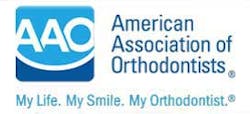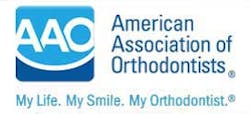The role of the dental hygienist in orthodontics
The role of the dental hygienist in orthodontics is a key and important one! From education, to assessment, to supportive therapies during orthodontic treatment and maintaining health, the dental hygienist has the unique and frequent opportunity to impact this ever-growing area of dentistry. While most dental hygiene programs include some education on orthodontics, it is not covered to the extent for today’s demands on occlusal health.
As patients tend to see the dental hygienist initially and on a regular basis, the following will be essential for the clinician:
- Occlusal assessment
- Patient education on tooth movement sciences
- Pre-orthodontic therapies
- Clinical interventions to maintain health during orthodontic therapy
- Post-orthodontic considerations
- Daily oral hygiene methods and strategies specific to the orthodontic patient
Occlusal assessment
The American Association of Orthodontists (AAO) recommends the following assessment criteria:
When to see an orthodontist (1) — If you recognize any of these signs in your child or yourself, it might be time to schedule a consultation with an orthodontist:
- Early or late loss of baby teeth
- Difficulty chewing or biting
- Mouth breathing
- Sucking the thumb or fingers, or other oral habits
- Crowded, misplaced, or blocked-out teeth
- Jaws that shift, make sounds, protrude, or are recessed
- Speech difficulty
- Biting the cheek or biting into the roof of the mouth
- Protruding teeth
- Teeth that meet in an abnormal way or don’t meet at all
- Facial imbalance or asymmetry (features out of proportion to the rest of the face)
- Grinding or clenching of teeth
- Inability to comfortably close lips
The AAO has launched a national campaign, which has included cable television media spots that message the importance of a smile and its relation to optimal oral health. The video also includes the fact that braces are not just for kids. The “My Life, My Smile, My Orthodontist” campaign includes patient education videos, brochures, and other resources that are of value to the profession as well. There is a specific page dedicated to these resources at http://www.mylifemysmile.org/downloads that clinicians can download and use in their practice.
AAO patient education brochure about adult orthodontics
Additionally, the American Academy of Periodontology has specified occlusal examination as part of the periodontal assessment. The 2011 Comprehensive Periodontal Therapy (2) statement includes the following: “An occlusal examination that includes, but may not be limited to, determining the degree of mobility of teeth and dental implants, occlusal patterns and discrepancy, and determination of fremitus.”
In terms of treatment procedures the document includes the following: “Occlusal therapy that may include tooth movement, occlusal adjustment, splinting, periodontally accelerated osteogenic orthodontics, or biteguard therapy as a means to establish and maintain occlusal health;” and “Procedures to facilitate orthodontic treatment including tooth exposure, frenulectomy, fiberotomy, temporary anchorage devices, and gingival augmentation.”
These assessment and treatment recommendations outline the process of care that should be adopted for all patients.
Collaborative practice
The best strategy dental hygienists can employ to increase their knowledge and incorporate orthodontic considerations into the practice is to connect with referring orthodontic practices. The orthodontist will outline assessment as well as treatment options available. In turn, the dental hygienists can educate the orthodontic practice on the latest in caries prevention and periodontal care. Orthodontics is not just about straightening teeth … it’s about treating tissue and bone!
References
1. AAO Consumer website. http://www.mylifemysmile.org/why-orthodontic-treatment/ Accessed Sept. 9, 2013.
2. Comprehensive Periodontal Therapy: A Statement by the American Academy of Periodontology; J Periodontol. July 2011; Volume 82, Number 7. Available at: http://www.joponline.org/doi/pdf/10.1902/jop.2011.117001.



